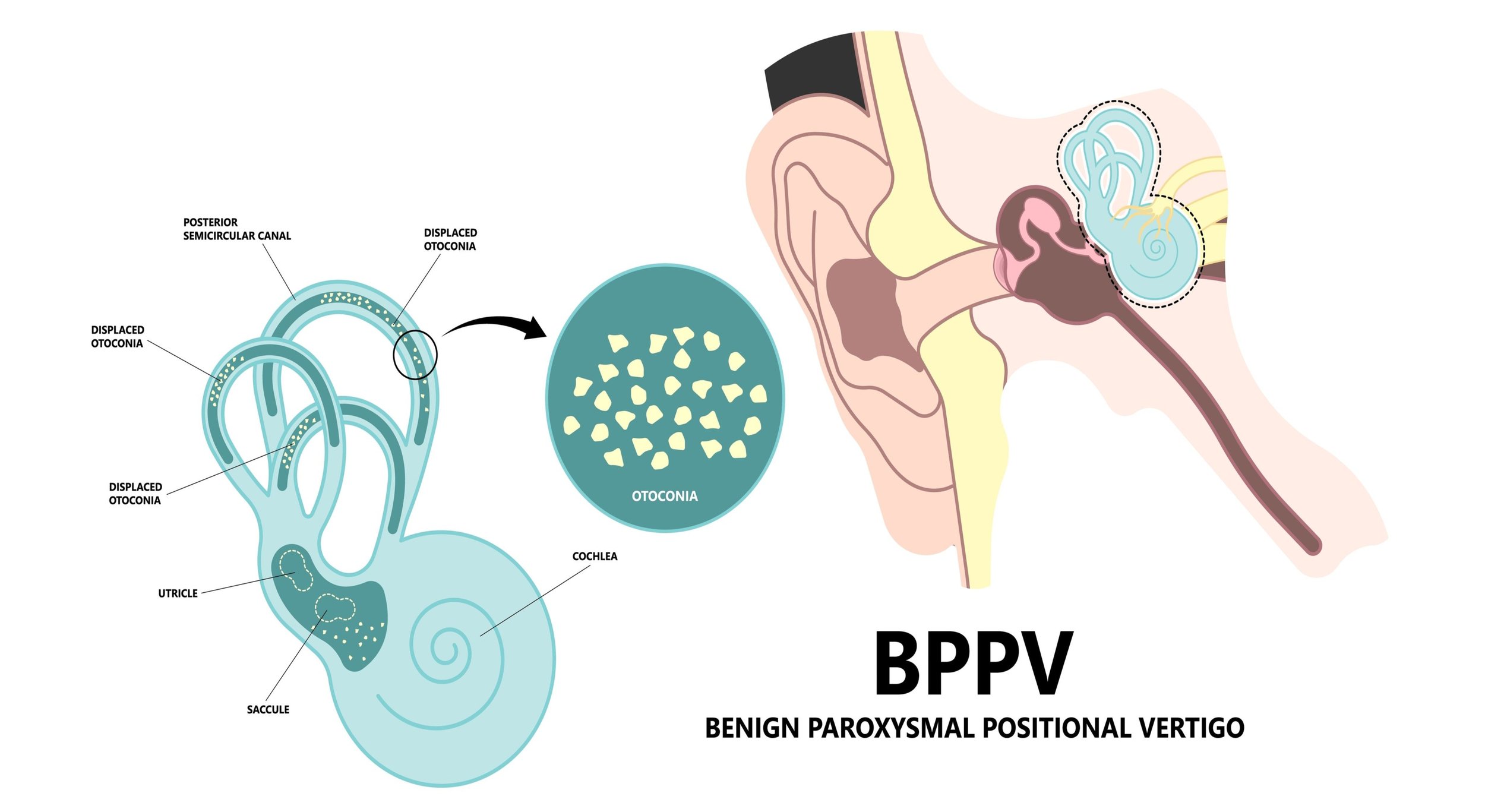What is BPPV?
What is BPPV?
The abbreviation BPPV stands for Benign Paroxysmal Positional Vertigo. Because it’s such a long name, people commonly refer to it as crystals in the inner ear.
I know what you’re thinking now, we have crystals in our inner ear?
Yes indeed! They are called crystals because they are calcium carbonate crystals (called otoconia) which usually sit in one part of our vestibular system (see our previous post on the vestibular system for more info).
When these crystals become dislodged, they end up in one of our semicircular canals. This causes symptoms which are typically worse when lying down in bed, rolling in bed, moving from lying to sitting and with head movements- especially looking up and down.
These symptoms are usually described as a spinning, whoosh sensation, but can also be associated with dizziness, light-headedness, feeling off-balance, difficulty concentrating and nausea.
BPPV is the most common cause of vertigo and dizziness, especially in those over 65 years of age.
When you have BPPV it puts you off-balance and can therefore increase your risk of falls, and significantly impact a person’s day-to-day life.
What causes BPPV?
Sometimes we don’t know what causes BPPV, people quite often say they just woke up one day to the world spinning!
BPPV is common after a car accident or head injury (think concussion or whiplash), post-surgery, an inner ear infection or other vestibular disorders.
Assessment and Treatment of BPPV:
BPPV can be diagnosed by a vestibular physiotherapist following a comprehensive assessment, with questions about your symptoms and overall health, looking at eye movements and some positional testing.
Then depending on what type of BPPV it is, we use a variety of repositioning manoeuvres to re-position the crystals to resolve your symptoms. The most common manoeuvre we use is called the Epley, if you might have heard someone mention they have had this done before.
The good news, it’s really effective! In that 90% of people can have full resolution of their symptoms in 1-3 treatments.
Can it happen more than once?
Some people have more than one episode of BPPV in a lifetime. There is a 50% chance you could have another episode in the future.
At this stage, there is nothing we can do to prevent another episode, so it is important to get back to moving and doing all the things you enjoy without fear of movement.
If you are afraid of moving or still worried about your balance after an episode, physios can prescribe exercises (called vestibular rehabilitation) to get everything feeling good again and get you back feeling balanced.
Blog by Tegan French, Vestibular Physiotherapist
Sources:
Herdman, & Clendaniel (2014). Vestibular Rehabilitation (4th ed.)
Bhattacharyya, N., Gubbels, S. P., Schwartz, S. R., Edlow, J. A., El-Kashlan, H., Fife, T., Holmberg, J. M., et al. (2017). Clinical Practice Guideline: Benign Paroxysmal Positional Vertigo (Update). Otolaryngology--head and neck surgery : official journal of American Academy of Otolaryngology-Head and Neck Surgery, 156(3), S1–S47. https://doi.org/10.1177/0194599816689667
The Royal Victorian Eye and Ear Hospital- Balance Disorders and Ataxia Service: BPPV Fact Sheet #26. Retrieved from https://eyeandear.org.au/patients-visitors/fact-sheets/benign-paroxysmal-positional-vertigo-bppv/
Vestibular rehabilitation special interest group (part of Academy of Neurologic Physical Therapy). Benign Paroxysmal Positional Vertigo (BPPV) Fact Sheet. Retrieved from https://www.neuropt.org/docs/default-source/vsig-english-pt-fact-sheets/bppv.pdf?sfvrsn=94e15343_2
Vestibular Disorders Association (VEDA): Benign Paroxysmal Positional Vertigo (BPPV). Retrieved from https://vestibular.org/article/diagnosis-treatment/types-of-vestibular-disorders/benign-paroxysmal-positional-vertigo-bppv/






